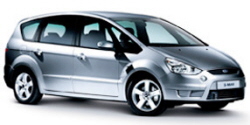For at least a quarter-century, the U.S. automotive press has accused General Motors and Ford of failing to offer their best products in the domestic market. So it should stand to reason that, with Detroit again in trouble, that these companies would now be giving strong consideration to offering their European- or Australian-market products in the American market.
 GM’s plans to offer the Opel Astra as a Saturn and the Holden Commodore (pictured) as a Pontiac are relatively old news. This morning, Automotive News reports that Ford is strongly considering a similar strategy based on the models it offers in Europe. An apparent Ford insider posting over at Blue Oval Forums informs that the auto maker has nine crash programs to adapt European models for the American market.
GM’s plans to offer the Opel Astra as a Saturn and the Holden Commodore (pictured) as a Pontiac are relatively old news. This morning, Automotive News reports that Ford is strongly considering a similar strategy based on the models it offers in Europe. An apparent Ford insider posting over at Blue Oval Forums informs that the auto maker has nine crash programs to adapt European models for the American market.
If bringing overseas models to the U.S. is such a no-brainer, then why wasn’t it done long ago? Well, there are at least two potential problems.
The first, pricing, applies mostly to European-market models. Smaller vehicles traditionally have commanded much higher prices in Europe. Add in the current weakness of the dollar, and European pricing is much higher than U.S. pricing. According to the Automotive News article, German prices for the Ford Mondeo, a midsize sedan, range from $27,821 to $48,638. Base prices for the American-market equivalent, the Ford Fusion, range from $17,995 to $24,585. Given the disparity, I certainly hope the Mondeo is as good as the press says it is.
 I’d personally love to have a Ford S-Max, which was recently awarded “Car of the Year 2007” by a panel of European journalists. I’ve been asking for a fun-to-drive, stick-shift vehicle with 2-3-2 seating for years, and the S-Max appears to fulfill my request perfectly. I can see paying low 30s for this vehicle, but in Germany the S-Max starts at over $32,000 and tops out over 40.
I’d personally love to have a Ford S-Max, which was recently awarded “Car of the Year 2007” by a panel of European journalists. I’ve been asking for a fun-to-drive, stick-shift vehicle with 2-3-2 seating for years, and the S-Max appears to fulfill my request perfectly. I can see paying low 30s for this vehicle, but in Germany the S-Max starts at over $32,000 and tops out over 40.
Both GM and Ford are profitable in Europe, but they’re not hugely profitable there. So these prices aren’t too far from their costs. At the same time, Americans clearly aren’t going to pay prices anywhere near those charged in Europe. So importing these models would clearly result in huge losses. There’s talk of eventually producing them in North America, but tooling up takes time. I’m personally very interested in seeing how GM and Ford deal with this pricing conumdrum.
Beyond pricing, it must be asked how well these products truly suit American tastes. The historical record is not promising. Back in the 1980s, Ford offered a pair of highly acclaimed European models in the U.S. under the Merkur (German for “Mercury”) sub-brand. That effort flopped. In the late 1990s, GM rebadged the well-reviewed Opel Omega as the Cadillac Catera. Flop. And, recently, it has sold the Holden Monaro as the Pontiac GTO. The American automotive press practically begged GM to import the Monaro, yet once it arrived they found plenty to criticize. Again, a flop.
Given this record, who can blame GM and Ford for not previously offering these models in the U.S.? But they’re apparently going to have another go at it, anyway. The cars do look good from afar, so best of luck to them.